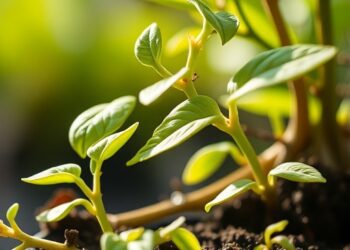A study conducted at the University of São Paulo (USP) investigated the extent to which climate-smart agriculture (CSA), an integrated approach involving methods and practices designed to make farming more sustainable and economically, socially and environmentally resilient, affects Brazil’s greenhouse gas (GHG) emissions.
A study conducted at the University of São Paulo (USP) investigated the extent to which climate-smart agriculture (CSA), an integrated approach involving methods and practices designed to make farming more sustainable and economically, socially and environmentally resilient, affects Brazil’s greenhouse gas (GHG) emissions.
To find out how much CSA affects GHG emissions, scientists at the Center for Nuclear Energy in Agriculture (CENA-USP) and Luiz de Queiroz College of Agriculture (ESALQ-USP) undertook a systematic review of papers with measurements of GHG in the countryside. The results of the study are reported in an article published in the Journal of Cleaner Production.
The investigation was conducted under the aegis of the Center for Carbon Research in Tropical Agriculture (CCARBON) and the Research Center for Greenhouse Gas Innovation (RCGI). CCARBON is one of the Research, Innovation and Dissemination Centers (RIDCs) funded by FAPESP, and is hosted by ESALQ-USP. RCGI is an Engineering Research Center (ERC) established at the Engineering School (POLI-USP) by FAPESP and Shell, with the support of several companies.
According to Wanderlei Bieluczyk, first author of the article and awardee of a postdoctoral scholarship from FAPESP at CENA-USP, the main finding was that “conversion of degraded pastureland and conventional cropland to CSA practices, especially integrated production systems, has significant potential to mitigate GHG emissions thanks to a reduction in emissions of enteric methane [CH4] per product [per kg of beef produced, for example] and the functioning of the soil as a CH4 sink”.
In an interview given to ESALQ-USP’s Communication Division, Bieluczyk also noted the relative lack of data on GHG emissions measured in the field in Brazil, “which makes extrapolation to all Brazilian biomes difficult”.
Few researchers and institutions are working in this area in important regions of the country, such as the North and Northeast. Support for infrastructure and funding to increase the number of studies in these localities are needed to bridge the gap, he added.
He also stressed the urgent need for methodological improvements and research opportunities, including frequent on-farm measurements of carbon dioxide (CO2), methane (CH4), nitrous oxide (N2O), and agroecosystem carbon sequestration, across multiple climate-smart systems over several years.
“This will permit reliable calculations of the carbon balance and remove barriers to certification programs due to the lack of comprehensive data so that CSA systems can be included in the carbon market and other green finance mechanisms,” said Maurício Roberto Cherubin, second author of the article, a professor at ESALQ-USP, and Vice Director of CCARBON.
The results are important to refine the national GHG inventory, serving as scientific evidence of the potential for nature-based solutions and to support new policies, projects and investment in Brazil, he concluded.
Journal
Journal of Cleaner Production
Article Title
Greenhouse gas fluxes in Brazilian climate-smart agricultural and livestock systems: A systematic and critical overview
Article Publication Date
3-Jun-2024




